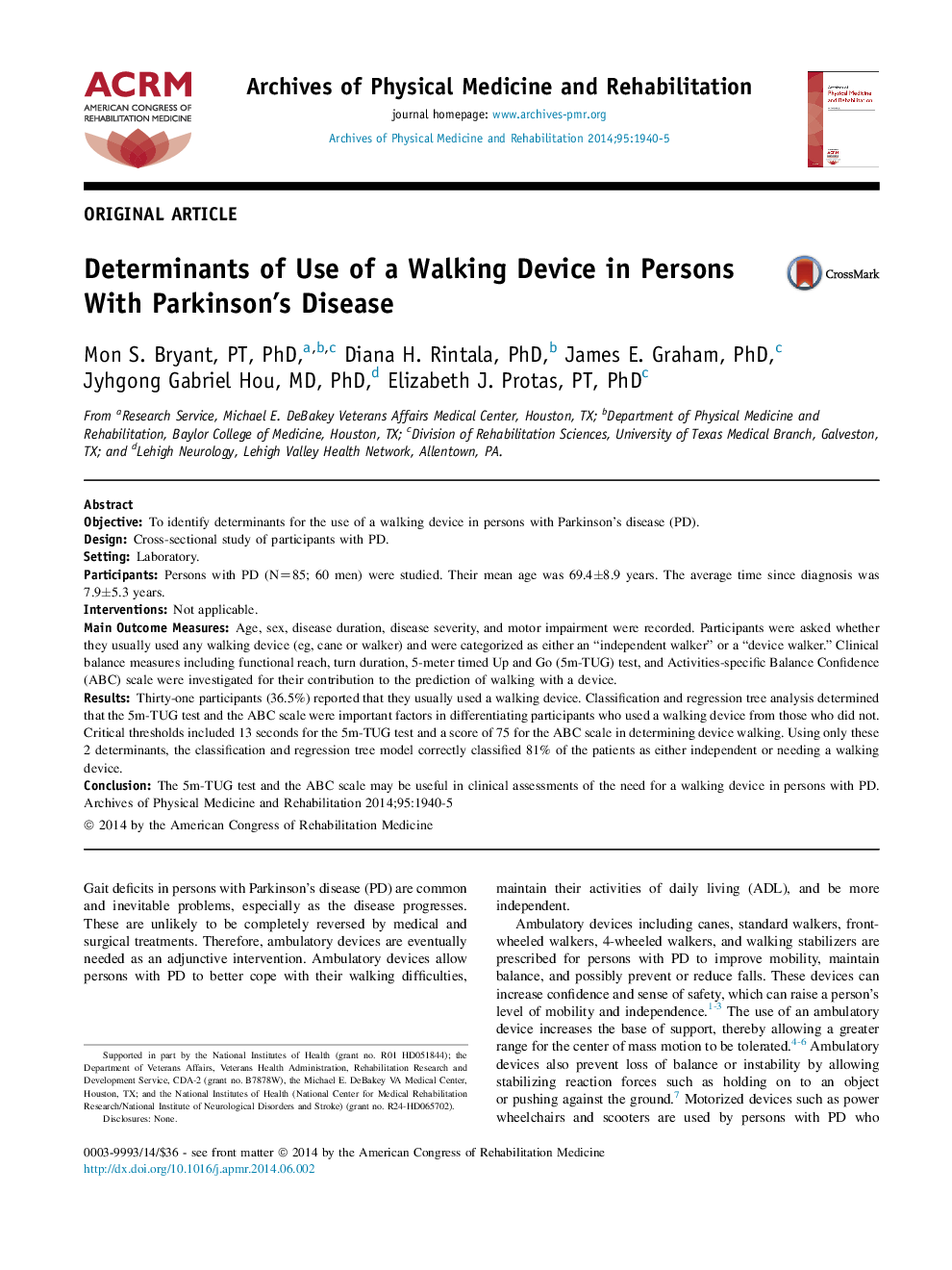| Article ID | Journal | Published Year | Pages | File Type |
|---|---|---|---|---|
| 3448759 | Archives of Physical Medicine and Rehabilitation | 2014 | 6 Pages |
ObjectiveTo identify determinants for the use of a walking device in persons with Parkinson's disease (PD).DesignCross-sectional study of participants with PD.SettingLaboratory.ParticipantsPersons with PD (N=85; 60 men) were studied. Their mean age was 69.4±8.9 years. The average time since diagnosis was 7.9±5.3 years.InterventionsNot applicable.Main Outcome MeasuresAge, sex, disease duration, disease severity, and motor impairment were recorded. Participants were asked whether they usually used any walking device (eg, cane or walker) and were categorized as either an “independent walker” or a “device walker.” Clinical balance measures including functional reach, turn duration, 5-meter timed Up and Go (5m-TUG) test, and Activities-specific Balance Confidence (ABC) scale were investigated for their contribution to the prediction of walking with a device.ResultsThirty-one participants (36.5%) reported that they usually used a walking device. Classification and regression tree analysis determined that the 5m-TUG test and the ABC scale were important factors in differentiating participants who used a walking device from those who did not. Critical thresholds included 13 seconds for the 5m-TUG test and a score of 75 for the ABC scale in determining device walking. Using only these 2 determinants, the classification and regression tree model correctly classified 81% of the patients as either independent or needing a walking device.ConclusionThe 5m-TUG test and the ABC scale may be useful in clinical assessments of the need for a walking device in persons with PD.
